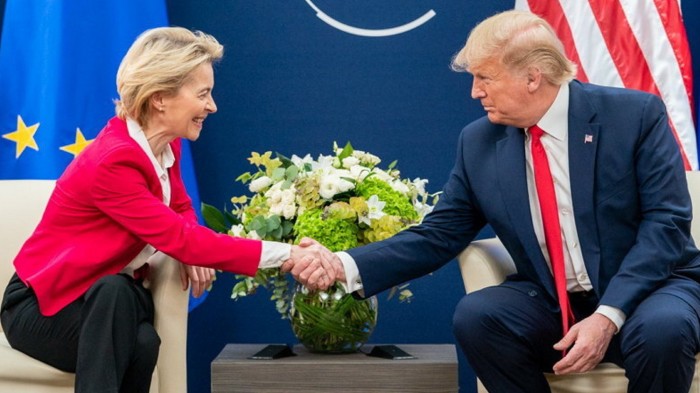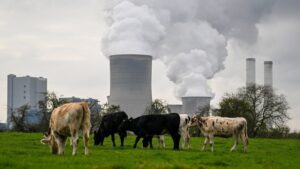
Unlock the White House Watch newsletter for free
Your guide to what the 2024 US election means for Washington and the world
European leaders treated the first Donald Trump presidency as an aberration: something to ride out while limiting the damage, rather than the spur it should have been to make the continent’s security and economy more resilient. Trump’s re-election proves his first term was no one-off. For four years — and, if Trumpism becomes embedded, perhaps for longer — Europe’s greatest political and economic ally is going to have a president driven by self-interest and little regard for traditional alliances.
That presents European leaders, in the EU and beyond, with multiple problems. As well as facing US tariffs themselves, they may be caught in a trade war between the US and China, Europe’s biggest export markets. If Trump forces Ukraine into a deal with Moscow, they may face an emboldened Vladimir Putin. They must begin, quickly, to take more responsibility for the continent’s defence. Europe’s economy must be made more dynamic and competitive, and less dependent on ties with Washington and Beijing. The goal has to be to insulate Europe as far as possible from Trump-inflicted damage.
That task will be complicated by political realities. The EU’s sputtering Franco-German “motor” has stalled altogether after hitting gridlock in Paris and coalition collapse in Berlin. The UK, one of Europe’s biggest militaries and foreign policy voices, is outside the EU. Nationalist populist leaders in several countries see Trump’s return more as opportunity than threat. Others that fear their security is at risk may try to cut deals with the president. The risk is that everyone goes their own way. But for all those committed to preserving a liberal democratic Europe and its institutions, the guiding principle must be that Europe is strongest when it pursues collective action — where necessary through coalitions of the willing.
The earliest challenge may be Ukraine. European partners should for now help to strengthen Kyiv’s hand ahead of any negotiations. They should summon all possible diplomatic leverage to push for terms that preserve Ukraine, beyond the line of Russian control, as a viable postwar state — above all western security guarantees. If there is no deal but Trump withdraws US support, they must be ready to fill the financing gap themselves.
European states have to prepare, too, for a smaller American role in Nato, or even an end to the 80-year US commitment to European security. That means investing much more, individually and jointly, in building up Europe’s capabilities ranging from conventional forces to intelligence-gathering, to replace the US contribution. Not all Nato members have even met it, but the target of spending 2 per cent of GDP on defence already looks wholly inadequate.
Any chance of financing such spending will require limiting harms from Trump tariffs while rebooting Europe’s economy. Here, too, collective action is key — and on trade Brussels at least has a two-step strategy: to offer Trump a quick deal, or targeted retaliation if he opts for punitive tariffs. A substantial offer to buy more US liquefied natural gas, for example, might yet help to placate Trump while enabling Europe finally to ban Russian LNG imports.
The EU has a ready-made plan, too, to boost growth and competitiveness, in Mario Draghi’s recent 400-page blueprint. Much of this rightly involves removing barriers to business between EU countries and between its capital markets, and leveraging the scale of its single market. But EU leaders will have to find the will to implement it, and ways to finance the additional €800bn a year investment Draghi advocates.
Such calls for action may be more a matter of hope than expectation. But Europe has shown itself able to rise to historic challenges in the past. It cannot afford to muddle through the second, far more urgent, Trump wake-up call as it did through the first.

